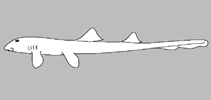
Friday, 13 February 2015
Bioluminescent bloom
As one of my many hobbies Im also a keen photographer turning my hand to many different types of of photography including astro photography. Recently while searching the web I came across some photo's taken at night showing an amazing natural phenomena a Bioluminescent bloom in Hong Kong, this is caused by Noctiluca scintillans. Commonly known as the Sea Sparkle,[1] and also published as Noctiluca miliaris, is a free-living non-parasitic marine-dwelling species of dinoflagellate that exhibits bioluminescence when disturbed (popularly known as mareel). Its bioluminescence is produced throughout the cytoplasm of this single-celled protist, by a luciferin-luciferase reaction in thousands of spherically shaped organelles, called scintillons. Nonluminescent populations within the genus Noctiluca lack these scintillons.


Friday, 6 February 2015
bamboo sharks - Hemiscylliidae
Family Hemiscylliidae - Bamboo sharks
|
Order
|
:
| |||
Class
|
:
|
Elasmobranchii
| ||
No. in FishBase
|
:
|
Genera : 2 | Species : 17 Eschmeyer's Catalog of Fishes
| ||
Environment
|
:
|
Fresh : No | Brackish : No | Marine : Yes
| ||
Division
|
:
|
Marine
| ||
Aquarium
|
:
|
none
| ||
First Fossil Record
|
:
|
upper Jurassic
| Ref.. Berg, L.S. 1958 | |
There are around 12 species in this family of small sharks. Longtail carpet sharks and bamboo sharks are usually less than four feet in length. They are found in shallow tropical waters in the Indian and Pacific Oceans.
They have long, cylindrical bodies with tails that are longer than their bodies. They have barbels on their snouts.
Many of the sharks in this family have spotted and banded markings on their bodies. They feed on the ocean floor and eat small fish and crustaceans.
Unfortunately these are not reef friendly as they will eat any crustacean in the aquarium. It stays relatively small, but requires at least a 180 gallon or larger aquarium as an adult.
Image courtesy of Timothy Wong
Subscribe to:
Comments (Atom)


